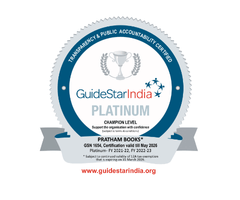The Digital Revolution in Children’s Publishing

cc licensed flickr photo shared by samwebster
In March, Anna Quindlen wrote in Newsweek, “Well, what is a book, really? Is it its body, or its soul?” Publishers of all stripes are struggling with that definition, including children’s publishers. Picture books have used artwork as a core part of their storytelling as long as the art form as existed, yet they have always evolved, too.
Although children’s book publishers are pretty confident in the long-term survival of printed books for children—”Children are still going to have a bookshelf,” says Susan Katz, president and publisher of HarperCollins Children’s Books—they are far from ignoring the elephant in the room. Katz admits: “They’ll have shelves with many other things, too.”
On those shelves no doubt will be plenty of electronic gadgetry, and children’s publishers are working to determine what defines a book, which devices to embrace, how to handle digital rights (and who has them), and how they can make money with e-products.
Certain trends are already emerging, chief among them being interactivity. “We’re entering into a new interactive art form,” says Rick Richter, formerly the president of Simon & Schuster Children’s Publishing and now a digital media consultant. Freed from rules about page count and paper weight, digital creators enjoy great flexibility. In the process, they can appeal to nonbookworms, such as computer and game geeks. “If anything, it will lead a lot of kids to books,” says Richter. He’s not alone in this belief. “Early reports indicate that this content is not replacing traditional books. It’s replacing games,” says Kristen McLean, executive director of the Association of Booksellers for Children. “Parents would rather see their kids engaged in book content than in game content.”
“It’s never been our intention for one to replace the other,” says Jeanne Mosure, senior v-p and group publisher of Disney Publishing Worldwide. “Our intent is that it’s always going to push the sale of our books.” Indeed, with Disney’s Kingdom Keepers app, readers must have the book to “unlock” the game. Scholastic’s 39 Clues series requires readers to both use the computer and read the books. “I have never believed in cannibalization,” says Nicholas Callaway, chairman of Callaway Arts & Entertainment, which created the iPad app for Miss Spider’s Tea Party, with enhanced narration, animation, interactivity, and sound effects. Author David Kirk has sold more than six million copies of his 1994 book, but the app has given his story a new lease on life.
With its sleek and powerful iPad, iPod Touch, and iPhone, Apple dominates discussions of the future of children’s digital publishing.
The cost of iPad apps ranges from $1.99 (for Dr. Seuss’s Gertrude McFuzz) to $9.99 (for the elaborate Miss Spider’s Tea Party), but it’s unclear whether parents will fork over the money for kids to use a $499 iPad that might easily fall into the toilet or sandbox. “We do think it’s going to take a little bit of time to determine how relevant this platform is going to be for kids,” says Deborah Forte, president of Scholastic Media, which has brought Clifford’s Be Big with Words and I Spy Spooky Mansion, its top-ranking apps from the iPhone and iPod Touch, to the iPad.
Children can now “literally participate” in a book, says Sharon Streger, owner of Sequel Creative/Sequel Digital, which develops interactive, sing-and-record kids’ apps. “Why do a pan-and-scan version when you can actually put the child into the book for a complete experience?” she asks.
Digital books for teens are a small but growing market as well. Already, they are using their parents’ Nooks and Kindles. And especially in Japan, they appear willing to read e-books on smartphones. Their motto, says Richter, is: “I want to consume media when I want to consume media.”
“The possibilities for extraordinary picture book development enabled by the new and imminent color devices are vast, and our editors and creative folks are absolutely galvanized,” says Gibson at Random House. “It is the most exciting development I have ever experienced in my eons-long career. So saying, we are holding all digital development to the extraordinarily high standards that we bring to print. The digital picture books we bring to market must be innovative, must be technologically flawless, must exceed the expectations of the consumer, and must—above all else—delight kids.”
Read the entire article here.








